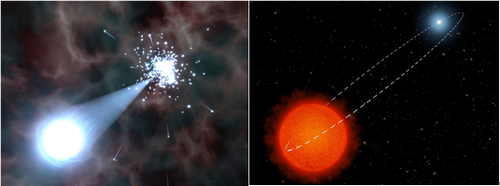By combining the astrometry from Gaia DR2 and spectroscopy from large surveys, an increasing number of chemo-dynamical researches indicate that our Milky Way (MW) has experienced multiple accretions with nearby dwarf galaxies. However, it is difficult to describe how they were accreted.
Globular clusters (GCs), as one of the earliest formed stellar systems, may encounter unstable perturbations due to the changing gravitational field caused by MW-dwarf galaxy interactions. Some GCs may be destroyed, leaving a long trail of stellar streams, which eventually dissolve to the field; while other GCs may lose some stars due to perturbation. If we can find these lost stars, and learn more about their dynamics, it would be helpful to present the details in the MW accretion events. Luckily, GCs have a kind of unique stars: N-rich stars. Searching for these N-rich stars in the field is beneficial for revealing the process of MW-dwarf galaxy interactions.
On their continuing quest to study N-rich field star, Baitian Tang, an Associate Professor from Sun Yat-sen University (SYSU), and collaborators from National Astronomical Observatories of Chinese Academy of Sciences (NAOC) and Chile have recently identified ~60 new N-rich field stars from LAMOST DR5. Based on their previously identified 40 N-rich field stars from LAMOST DR3, the sample size has been extended to more than 100.This work has recently been published by The Astrophysical Journal.
N-rich stars can be produced in GCs, but they are not the only origins. Binaries systems can also create N-rich stars. Thus, other methods are needed to further distinguish the origins of these N-rich stars. By analyzing the kinematic characteristics, the researchers found that a large proportion of these N-rich field stars originated in GCs. At present, the research team has obtained the high-resolution spectroscopic data for a sub-sample of these N-rich stars using the Magellan Telescope in Chile, and their detailed chemical composition will be further studied.

Figure: N-rich field stars may be ejected from globular clusters or produced in binary interaction. (Illustrative figures come from the internet)
The link to the paper:https://iopscience.iop.org/article/10.3847/1538-4357/ab7233

Address: 20A Datun Road, Chaoyang District, Beijing, China code: 100012
Tel: 010-64888708 E-mail: naoc@nao.cas.cn

